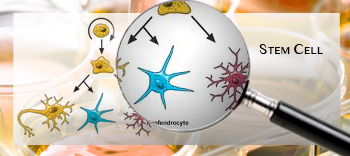Stem Cell Research
A recent study examined induced pluripotent stem cells – or adult cells reprogrammed to behave like embryonic ones – to reveal clues about how autism spectrum disorder is derived in brain cells. Explore this section to learn more about stem cell research in autism.
We all begin as stem cells. Very early during development, a small population of cells, called embryonic stem cells, hold the potential to become almost every type of cell in the body. In 2006, a group of researchers in Japan reported a way to convert cells from the skin back into stem cells. The conversion process enables neurons to be made from stem cells derived from the skin of a person with autism. This groundbreaking study removed a difficult obstacle to ASD research—studying the neurons of a person with autism—by enabling neurons to be grown from stem cells in a petri dish. Scientists are now using stem cells to investigate the inner workings of neurons from people with autism to develop new, individualized diagnostic and therapeutic tools.
Key Points
- Stem cells are capable of becoming many cell types in the body, including neurons and other types of cells in the brain.
- The ability to generate induced pluripotent stem cells (iPSCs) from the fibroblasts of human patients and subsequently differentiate them into particular cell types has allowed researchers a means to bridge the gap between cellular phenotype and clinical phenotype.
- iPSC technology have been used to generate and examine cellular defects in neurons from patients with monogenic syndromes associated with ASD, such as Rett syndrome and Timothy syndrome.
- Stem cell research can be used in drug screening of iPSC-derived brain cells from ASD patients and in the potential development of individualized therapies.
Misconception
Embryonic stem cells are taken from eggs that have been fertilized within a woman’s body.
Fact
Embryonic stem cells are derived from donated preimplantation embryos that have been fertilized outside of the body in fertilization clinics.
Read about other misconceptions.


